Gareth E. Rees's Blog, page 5
February 7, 2020
A Walk into the Dark Side: A New Map of Occult London
“Within the city exists a shadow world of druids, mystics, magicians and witches.”
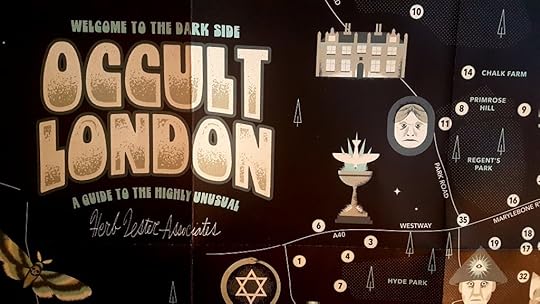
Occult London: A Guide to the Highly Unusual , published by Herb Lester Associates, is a beautifully packaged, litho-printed map of the capital city, designed and illustrated by Brian Rau, with text by Kate Hodges.
Each of the numbered points on the map comes with an address, postcode and explanation of the location’s occult connections.
In the West, entries include the studio where The Rolling Stones recorded Sympathy for the Devil, the former headquarters of The Hermetic Order of the Golden Dawn and the basement flat where Alexanders Sanders and Maxine Morris ran their coven in the 1960s.
In the North, you’ll find the spot where organist and saxophonist Graham Bond – tormented by demons and believing he was Aleister Crowley’s lovechild – leaped in front of a tube train.
Central London, as you’d expect, is packed with occult locations, from the home of Wicca-founder Gerald Gardener, to Dennis Wheatley’s house, to a Soho pub which was home to the Ancient Order of Druids.
To the East is the alleged burial spot of John Dee – mathematician, alchemist, astrologer and an advisor to Queen Elizabeth I – as well as a cocktail bar where you can find shrunken heads and the squat where Throbbing Gristle’s offshoot Pyschick TV had their headquarters.
Heading South, the map will take you to the spot where William Blake saw angels in an oak tree and the final resting place of gardener and occultist Elias Ahsmole, where can also be found a skull-and-crocodile adorned tomb.
If you’re planning a walk around London, this map will give you some inspiration for key locations to visit. But even if you have no intention of leaving the house, or even going to London, this is a beautiful object to own.
You can order a copy from Herb Lester Associates here .
Also check out Kate Hodges’ new book, Warriors, Witches, Women – “the stories of 50 goddesses, ghosts, and half-monsters, revisited from a modern, feminist perspective”, with a foreword by Maxine Peak.
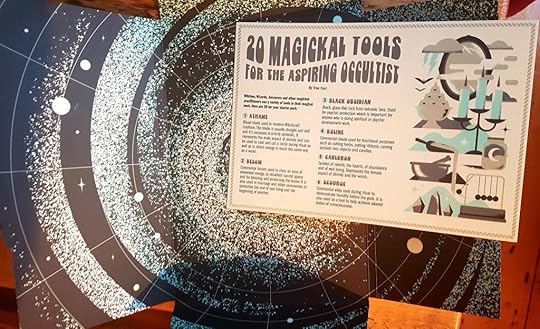
October 13, 2019
The Supermarket Car Park Fugue
On The London Ear show on Resonance FM, Unofficial Britain’s editor Gareth E. Rees reads from his new book Car Park Life (Influx Press) with car park music interludes selected by host Ben Thompson.
LISTEN HERE:
TRACKS:
Euros Childs – All Across The Car Park
Can – Hunters and Collectors
Euros Childs – Farm Fun
Dinosaur Jr – Start (ahem) Shoppin’
Adam & the Ants – Car Trouble
The Fall – Strange Town
Swamp Dogg – Synthetic World
Moondog – Stomping Ground
The Saints – One Way Street
Al Stewart – A Small Fruit Song
The Raincoats – Fairytale In The Supermarket
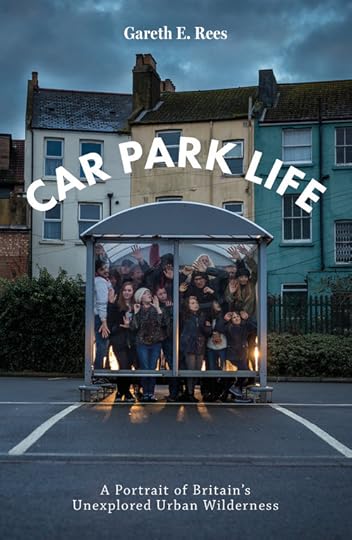
Car Park Life by Gareth E. Rees is available here from Influx Press.
‘A retail park Heart of Darkness.’
– John Grindrod, author of Outskirts
‘Extraordinary. I loved it, and will never take my Asda car park for granted again.’
– Angela Barnes
‘Compelling, insightful and teeming with mid-life spirit.’
– Andrew Kötting
Gareth Rees succeeds brilliantly in illuminating these neglected spaces and in bringing their unexpected stories to life.’
– Merlin Coverley, author of The Art of Wandering
July 5, 2019
Fat Balls & A Lost Wedding Ring at a Sheffield Retail Park
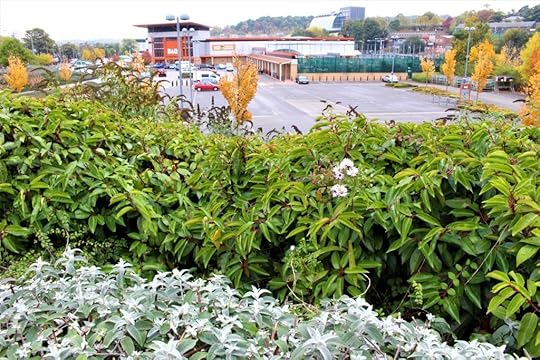
LOCATION: Sheffield
WORDS: Gareth E. Rees
My third book Car Park Life is forthcoming on Influx Press – details here – described as “A retail park Heart of Darkness” (John Grindrod)”.
To celebrate this, and also the pronouncement of my divorce yesterday, here’s a piece that’s not in the book, all about a trip to Sheffield in 2015 in which, ominously, I lost my wedding ring.
Sheffield University is my alma mater. I studied English Literature there from ’92 until ’95. It was a period of great disruption. The Supertram was under construction, tearing up roads in the city centre and leaving formerly buzzing student areas abandoned.
Of course, you build your own city-within-a-city when you’re a student. We found corners with good jukeboxes, pool tables and cheap beer. We constructed fruitful lines of transit between the English department buildings, boozers, and wherever we lived. We had fun.
Twenty years on, I am back for the launch of Walking Inside Out: Contemporary British Psychogeography, a book for which I’ve contributed a chapter. After the the post-event boozing, I sleep deeply in the Premier Inn and awake with a notion that I should visit a retail car park while I’m here.
I shove my stuff into my knapsack and embark on a long walk through the city, past the Crucible Theatre, Sheffield Hallam Uni and The Leadmill until I reach a giant inflatable T-Rex which welcomes me to Queen’s Road.
This road runs south alongside, then over, the River Sheaf, which gave the city its name. Sheaf comes from the Od English word for boundary and the river was once the border between the Anglo Saxon kingdoms of Mercia and Northumbria. In medieaval times, corn mills were built along the river and, after the industrial revolution, works for forging steel for cutlery.
In 1905 the Queens Road works opened, where they built the original Sheffield trams, grand buildings guarded by two stone lions, which were demolished in the 1990s, at the same time as the city brought back – at huge cost – the tramways it had abandoned decades ago. The road now combines small Victorian worker terraces on one side, with old brick factories and warehouses on the riverside, interspersed with newer retail buildings like B&Q and Asda, each with their attendant car parks, gates and access roads.
I notice that the Big Yellow Storage company now offer to store students in their facilities over the holidays, which I imagine is convenient, though uncomfortable for the students.

To get the measure of this road, I keep walking along the river, stopping every now and then to read steel tourist information plaques with embossed details of the city’s official history. Eventually, I reach an area of independent hardware stores, mechanics garages, prohibitive-looking pubs and dank furniture warehouses, where the smell of sizzling bacon fills the air and burly men come and go.
This area is known as Heeley Bottom, once a major shopping centre, with a train delivering visitors to Heeley Station from Derbyshire. It feels like a relic, a museum of retail long gone in a time before cars and road networks dominated the flow of commerce and rails and rivers were the conduits connecting hubs of community.
On the road behind me is a second hand car dealership and a shabby, closed shop plastered in posters, two of which implore the viewer to VOTE ZOGG, related to some psytrance event four years previously. The top floor of the building is painted a dismal black with a sign that says: The School of Holistic Therapy: Total Quality Within, which sounds like it should be a song from The Fall’s 1990s output.
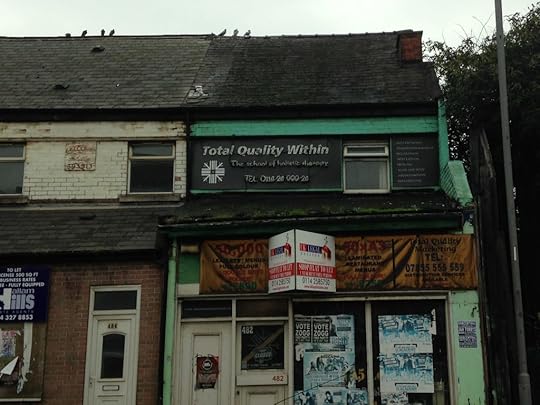
This is more like the Sheffield I remember. But it’s not nostalgia I feel. More a sense that what has been overlayed in recent years….the shiny slab of gourmet café culture in the city centre… is fake somehow. Temporal. A delusion. Behind that façade is a darker truth, suggested by this closed shop front.
Below me, on a red brick wall at the River’ Sheaf’s edge, there is a poem in white chalk. The text on the left obscured by buddleia, but here is what I can make out.
…MASS INTO ILLUSION IS TO SLEEP
…DESTINATIONS WAKE ALONG THE PRE
…CHANNELS OF A CYCLICAL STREAM; TO
…ISOLATION’S TRUTH IS TO BELIEVE
…THING NOT DROWNING FOREVER
…THE TRANQUILLITY OF DREAM
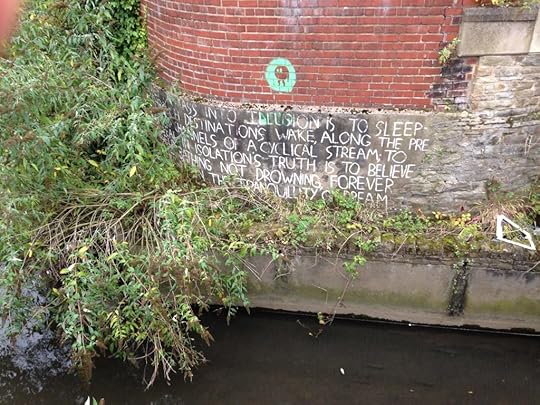
The person who wrote that must have been standing waist high in the water at the time, or on a vessel small enough to navigate the narrow, strangled channel. Such is the urge to create site-specific literature, a poem about a stream in a stream, purely to be read by anyone who happens to chance a look downwards and take the time to read.
I instinctively tap railing with my wedding ring finger, and am surprised it makes no sound, for there is no wedding ring on my finger.
I am absolutely positive I was wearing it yesterday, as I wear it pretty much every day, though I take it off sometimes as it’s a bulky gold band that gets sweaty and until I got married I had never worn jewellery of any kind. For the first few years of marriage I was painfully aware of its presence. The discomfort of the ring was symptomatic of newness, uncertainty, trepidation. But seven years on I was more aware of when it was not on my finger than when it was, representing a phase of comfort in the marital skin.
And yet I am not wearing the ring today in Sheffield, and I don’t know why, or where the ring could be.
I rummage through my backpack several times. Check my pockets vigorously. Nothing. Gripped by a mild panic, I consider returning to the Premier Inn, but I have car parks to explore in this brief window of opportunity before I return home to the South.
I dismiss thoughts of the ring and enter the southern entrance of the Queens Road Retail Park where three superstores share a car park, bordered by low wall and a sea of topiary, sprinkled with falling leaves, the first signs of autumn. Dreams: The Bed Specialist has an appropriately sleepy car park with the sum total of one car parked in it.
Nearby, pale blue bollard posts surround a hole in the tarmac where a tree must have been. The dream of I tree, I suppose.
Next door is Netto, the Danish discount supermarket, bought by Asda in 2010, with its luminescent yellow signage and a bizarre logo of a dog drinking from cup with a straw, plastered in every window. Among a small display of pot plants outside the automatic doors is a stack of what are described as ‘COUNTRYSIDE FAT BALLS’.
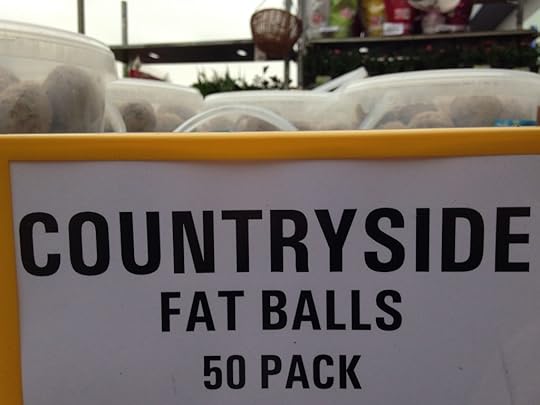
I’ve never been to a Netto before. It could be something lost in translation from Danish culture, but it feels like it’s taking the piss. A slogan on the window reads:
‘nice things in a nice shop at a nice price’
There are many more cars parked outside Magnet, the kitchen showroom. Two gently flapping sail signs with the shop name on them are weighed down with sandbags. Next to them is another sign that says:
WHERE IS YOUR WEDDING RING, GARETH?
As I take a few pointless photos outside Poundstretcher, I am mocked by two men loading carpets into truck, striking saucy poses and cackling loudly. I give them a fuckoff smile and move out through the main entrance onto Queen’s road, which is guarded by two statutes: the Mad Hatter and Queen of Hearts.
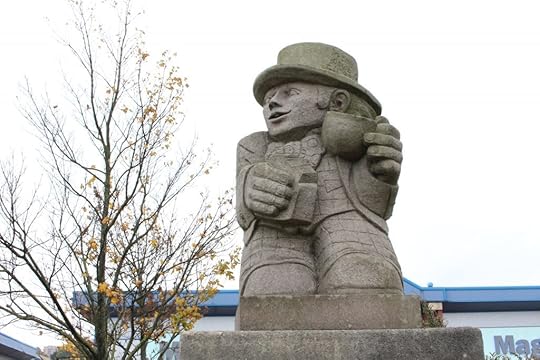
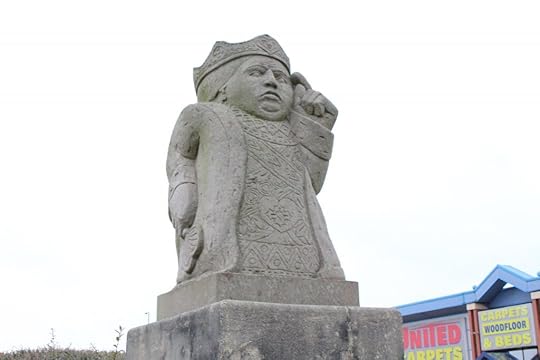
It’s a piece of public art that was created in a retail unit in this location by Vega Bermejo in 1994. On the other side of the road behind me are boarded up shops in the Victorian terrace, a mobile phone card shop and a new store called WHERE IS MY FUCKING WEDDING RING?
I enter a new area of the retail park with KFC, United Carpets, B&Q and Asda. There’s a dead space to the left of Asda, between the flank of the store and the hill up to the railway bridge. The emptiness is bleak. I wonder where my wedding ring is and if I’ve lost it forever.
Forlorn , I climb up the steps onto road and look down at the B&Q car park by the railway, dotted with autumnal brown trees and scored with faded white lines, empty of cars, except for a cluster of white vans.
There’s a desire path by the bus stop in front of me, cutting through a steep verge littered with butts, wrappers, cans and bus tickets. People must get off the bus and crash straight down the slope into the car park, like someone elated at finding a lost wedding ring, or chasing after a wedding ring thief.
I follow the desire path, joylessly, like a man who has no wedding ring, then into the car park, along the high mesh fence by the area where they sell logs, plants, garden sheds and products of that ilk. Someone has written ‘trouble makers’ on the wall.
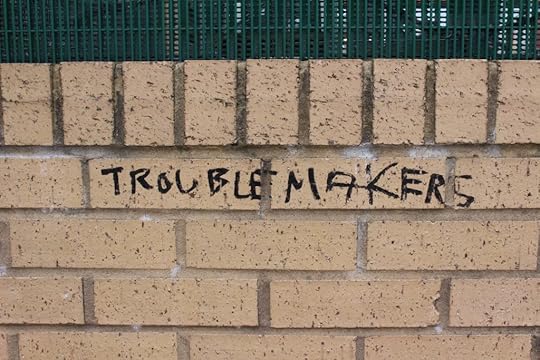
A Perspex walkway leads me to the store entrance, lined with black-and-orange bollards, some bent, others smashed. Presumably this has done by those heavy weight trolleys that customers get in B&Q.
It’s even worse at the base of the orange steel pillars that hold up the roof, swathed in gaffer tape. More trolley damage? A car crash perhaps? Does anyone really care?
And where’s my wedding ring?
My best chance is that it’s in the hotel room I vacated this morning, which means that the cleaner has hoovered it up, half-inched it, or handed it in.
Really I should go back.
Further on, I reach the B&Q trade outlet. Men in paint-stained trousers. A sound of squeaking and grinding gears from a van juddering backwards, doors open, long plank of wood jutting out like a proboscis.
A sign on the wall says, B&Q Plc accept no responsibility for loss or damage to vehicles or property in the car park.
I bet they bloody don’t. This would be the worst place to lose a wedding ring. The worst.
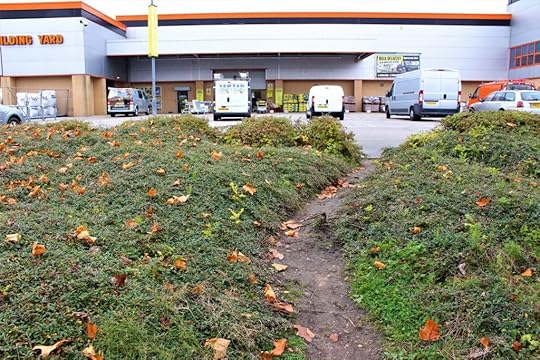
I take the long trudge back to the Premier Inn, idly scanning the pavement for wedding rings, just in case it fell off my finger. In reception, I explain the issue and they tell me the room hasn’t been cleaned yet. They’ll phone up. Five minutes later a cleaner comes down and nonchalantly hands me my wedding ring.
“There you go.”
Relieved, but annoyed now that I have wasted the past hour thinking about it instead of focusing on car parks, my true love, I slip it into my finger.
It’s a lucky sign. Despite some recent set-backs, everything is going to be okay with my marriage.
We’ll be together forever.
I’m sure of it.
Car Park Life is out in October, published by Influx Press. To pre-order a copy, click here .

April 12, 2019
Jazz Odyssey Reveals The Secret Life of the Car Park
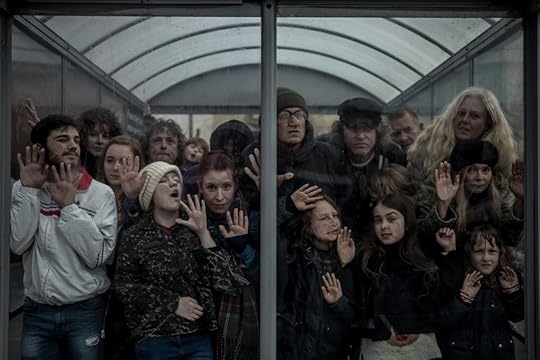
WORDS: Gareth E. Rees
MUSIC: Simon&thePope with Gareth E. Rees
FILM: Martin Fuller
PHOTO: Jeff Pitcher
‘It
is Morrisons that lights the fire of my obsession. Not the supermarket itself
but the space outside: the car park.’
Car parks are more than places to park your car. They’re thoroughfares. Rendezvous points. Accident black spots. Hangouts. Boy racer tracks. Historical locations. Zones of violence and sexual deviance.
In my forthcoming book Car Park Life (Influx Press), I walk the retail superstore car parks of Britain, looking for hidden stories, secret lives and unofficial narratives in what may be our last unexplored urban wilderness.
As a taster, here is me performing Car Park Life Live with Simon&thePope to a film by Martin Fuller at the Hastings Storytelling Festival 2018.
Car Park Life by Gareth E. Rees is out in October, published by Influx Press. To pre-order a copy, click here.

December 5, 2018
Absurdities and Synchronicities: A Postman’s View of the Everyday
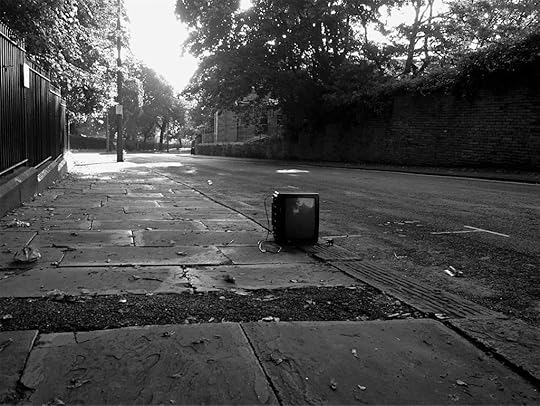 WORDS: Gareth E. Rees reviewing Round About Town, by Kevin Boniface, Uniformbooks 2018
WORDS: Gareth E. Rees reviewing Round About Town, by Kevin Boniface, Uniformbooks 2018
LOCATION: Huddersfield, West Yorkshire
IMAGES: Kevin Boniface from Round About Town
When I lived beside Hackney and Walthamstow Marshes, I was privileged to be a freelance writer who could work from home. It meant that I got to experience the same patch of landscape almost every day on my dog walks. This permitted me a deeply layered, nuanced view of the place. I saw the marshes in every season, in multiple shades of light, in variances in temperature and texture, under every kind of sky, affected by every kind of weather.
Five years of walking the same place allowed me enough time to gather images, stories and impressions. To see patterns in those things left scattered – the drug paraphernalia, the remnants of fox kills, abandoned sleeping bags, lost shoes and fly-tipped office equipment. Daily, consistent walking for five years allowed me to harvest enough experiences that, when condensed into my book, Marshland, brought out the richness and intricacies of the marshes that a few occasional visits wouldn’t achieve. When you are out and about, moving through a landscape every day, you notice things which others might ignore in their haste, or because they’re too deep in conversation. You get a microscopic view. And as with studying the physical world, the closer you look at objects, the weirder they tend to become.
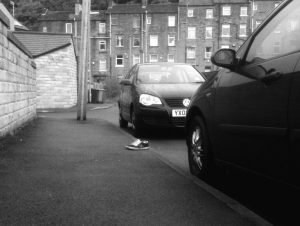 My experience in London sprung to mind when I read Kevin Boniface’s Round About Town, a portrait of Huddersfield as seen by a postman doing his daily rounds. It takes the form of sequential diary entries over a span of eight years. There is that same, dizzying flow of stories – rich, baffling and mysterious – that I experienced walking the marshes.
My experience in London sprung to mind when I read Kevin Boniface’s Round About Town, a portrait of Huddersfield as seen by a postman doing his daily rounds. It takes the form of sequential diary entries over a span of eight years. There is that same, dizzying flow of stories – rich, baffling and mysterious – that I experienced walking the marshes.
Instead of being fixed in a frame like a painting, Huddersfield becomes a fluid entity as a series of images, vignettes, incidents and glimpsed lives flow through every page, endlessly unfolding. Many of these are ‘tip of the iceberg’ narratives which suggests a deeper story.
“Two young men in hooded tops are fastening some blue flashing lights to the roof of a car. They each have an upturned bucket to stand on so they can reach.”
Everyday life is an ongoing farce. In one entry, a red Ford Ka speeds past him. A few paragraphs later, it speeds past him again in the opposite direction. When he sees the Ka a third time, it is half on the pavement with its front wing crashed into a wall. There is no attempt to explain or extrapolate. Boniface observes, writes it down, and then moves on.
The book is full of people doing inexplicable things for instance, “The man who regularly shouts at the top of his voice from the flats at 5.30am was screaming instead this morning.” In another segment, a man is walking down the street ahead of him, wearing a pink Winnie the Pooh duvet.
“Two black Labradors bark at each other from opposite sides of the street while their owners conduct a loud conversation about black Labradors above the noise”.
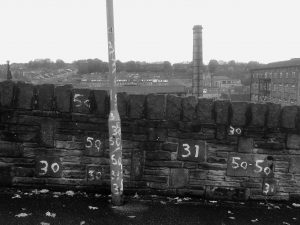 Odd coincidences – or synchronicities – catch his eye. He finds a piece of A4 paper on the street: “It’s the third I’ve found bearing this message in the last six months: ‘Iranian intelligence officers lick English Arse’.” Or there’s his list of places he’s seen the Cross of St George in a single day:
Odd coincidences – or synchronicities – catch his eye. He finds a piece of A4 paper on the street: “It’s the third I’ve found bearing this message in the last six months: ‘Iranian intelligence officers lick English Arse’.” Or there’s his list of places he’s seen the Cross of St George in a single day:
“1. Painted across the bonnet of a white baker’s van. 2. On a flag flying from a dead tree in a garden on Manse Drive. 3. On a flag flying from the Foresters Arms pub. 4. Painted on a drain cover by the back door of a house in Cowlersley. 5. On a flag flying from what used to be The Green Cross real ale pub but it now a Sex Encounter Club with blacked out windows and plans for a sauna.”
The flag links these disparate scenes together to create a peculiar postman’s-eye vision of the town, of Britain itself – dead trees, white vans, drain covers, sex clubs – but without a sense of judgement. The book takes everything as it comes. There is no hierarchy of objects or a sense that certain objects and entities are more picturesque or culturally valid than others.
“On my way into work, I see a bat, an owl, the short woman with the sweat-shirt and the peroxide perm.”
At times, the detailing of the walk, the density of the images, and the sense of cosmic humour at play behind everyday life feels similar to sections of Alan Moore’s Jerusalem. For instance, here’s a line from Moore’s novel: “Human existence is a grand recurrence. Nothing dies or disappears and each discarded condom, every dented bottle-top in every alleyway is as immortal as Shamballah or Olympus…” Boniface makes observations and sees connections but leaves the reader to interpret this grand recurrence of images. In this book life feels small and mundane, but also grand and universal.
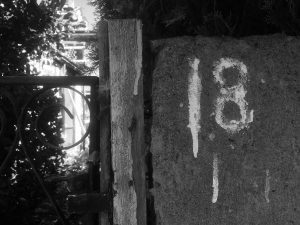 Against a backdrop of the seemingly mundane, there is something lurid, hyperreal and absurd about the town.
Against a backdrop of the seemingly mundane, there is something lurid, hyperreal and absurd about the town.
“A vicar has installed a lurid 3D picture of a blond haired Christ adjacent to the front door of the vicarage.”
There is even Dadaist humour to be found in the streets: “Yesterday there was a house brick wrapped in silver foil and two metal dessert spoons on the bench on Fitzwilliam Street. This morning, the spoons have gone but the house brick is still there.”
Among the many humorous vignettes there is a sadness to scenes which we might ordinarily pass by.
“At the house with the broken satellite dish and an empty Foster’s can in the garden, the front door has been graffitied with a marker pen: inside a wonky love heart it says, ‘I miss you Mum’.”
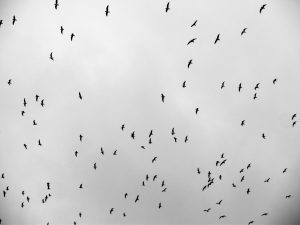 There is also nature of the Richard Mabey kind here – the Unofficial Countryside where plants and animals eke out a living among the estates, canals, pubs and pavements.
There is also nature of the Richard Mabey kind here – the Unofficial Countryside where plants and animals eke out a living among the estates, canals, pubs and pavements.
“A heron flies over Shangri-La, a blackbird picks up a sun-baked slug and bounces it on the driveway at the Orchard House and, at Greenside, where the man with the pickaxe says he’ll be ok as long as it stays dry, a robin is eating some shat-out berries on top of a gate post.”
In another scene what Boniface thinks is a plastic ornamental heron turns out to be a real one, which flaps away as he approaches. Sometimes the kitsch and the real are hard to separate. The artificial and the natural are intertwined in the streets of Huddersfield. This is a wonky, odd, occasionally bleak England, but also one full of heart and humour, in which life is just trying to get by.
Round About Town by Kevin Boniface is Available from Uniformbooks – you can visit their website here
 ABOUT THE AUTHOR
ABOUT THE AUTHOR
Gareth E. Rees is the author of Car Park Life out soon on Influx Press
‘A retail park Heart of Darkness.’
– John Grindrod, author of Outskirts
‘There’s no shortage of books nowadays seeking out the hidden corners of our towns and cities, but few set themselves the challenge of exploring seemingly such unpromising terrain as Car Park Life. Against the odds, Gareth Rees succeeds brilliantly in illuminating these neglected spaces and in bringing their unexpected stories to life.’
– Merlin Coverley, author of The Art of Wandering
‘Drives all over the psychogeography genre, and leaves the bodies buried beneath the tarmac.’
– Owen Booth, author of What We’re Teaching Our Sons
September 12, 2018
Object-Oriented Ontology: The Yorkshire Three
LOCATION: YORKSHIRE
FILM: A616
This is rather weird and wonderful…
The film duo Joshua Alexander and Erkembode, who featured on Unofficial Britain in 2015 with their Hackney Marsh films (watch them here) , are back with an “Object-Orientated Ontology” trilogy called The Yorkshire Three (2016-2018) I’m delighted to present them to you here.
The first, more narrative-driven piece is called Go Into Woods, and it’s really worth 6 minutes of your time. A man goes missing from work for three days. His explanation, via the phone, is a mad tale of how a shopping list he didn’t write sends him through an alleyway he’s never seen before, into another world. It’s a The Lion, The Witch and the Wardrobe for our troubled times, where the wardrobe is as much the protagonist as the curious child.
Watch that first, then check out the following two videos, which take a more abstract look at the weirdness of objects, their peculiar gravity, and how things can interact with other things, regardless of human beings.
Go Into Woods
GO INTO WOODS from A616 on Vimeo.
SUPPEr MOUNTAiN MiMiH
SUPPEr MOUNTAiN MiMiH from A616 on Vimeo.
Electric Aire
Electric Aire from A616 on Vimeo.
ABOUT THE FILMAKERS
A616 is an experimental film duo Joshua Alexander and Erkembode. They began their collaboration on and around the Lea Marshes where they used to live either side of it in Hackney and Walthamstow respectively. To cut a long story short they recognised that the marshes had something to say and this is how they became interested in OOO (Object-Oriented Ontology). A616 discovered a constant dialogue between all things and use film as a means to excavate this hidden language and offer an exploratory translation. A616, in collaboration with sound artist David Lazonby (Lazer Boy, Geese, 3eese, Frozen Geese), recently conducted a two-day performance piece, Bé Mặn Mimih, in a 16th century barn besides the river Aire in Kirkstall. A616 are excited to begin their biggest project yet in 2019. Watch. This. Space. Elvis.
FOR MORE INFORMATION, CHECK OUT THESE LINKS…
A616 vimeo page: vimeo.com/a616
THE YORKSHIRE THREE: vimeo.com/album/4866386
OOO (Object-Oriented Ontology): artspace.com/magazine/interviews_features/the_big_idea/a-guide-to-object-oriented-ontology-art-53690
Bé Mặn Mimih performance: vimeo.com/243792901
Joshua Alexander: joshua-alexander.weebly.com/
Erkembode: erkembode.weebly.com
August 26, 2018
Fieldgate Street
WORDS: Bobby Seal
IMAGES: David Hoffman [© David Hoffman]
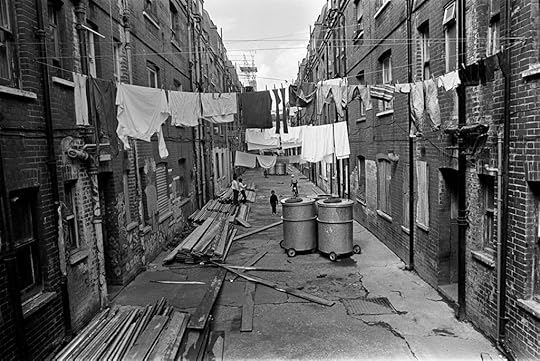 Children playing in the courtyard of the squatted tenement in Fieldgate Mansions, Aug 1985. © David Hoffman
Children playing in the courtyard of the squatted tenement in Fieldgate Mansions, Aug 1985. © David Hoffman
Introduction: When I was a student in London in the 1970s I lived in a tenement block called Fieldgate Mansions in Whitechapel. The area was pretty run-down but had a fascinating history and a really exciting ‘alternative’ vibe. In the seventies Whitechapel was just on the cusp of transforming from a traditional Jewish neighbourhood into the home of one of London’s largest Bangladeshi communities. Whitechapel was also the scene of the notorious Ripper murders and our street was home to Rowton House, Europe’s largest night shelter for the homeless, or ‘dossers’ as they were known those days. In his ‘The People of the Abyss’ Jack London called it ‘the monster doss house’.
Browsing through some old London pictures for another project I came across a gallery by a photographer called David Hoffman. I don’t recall ever meeting David, but I do recognise most of the places and some individuals in his pictures. Inspired by the images and the memories they stirred in me I wrote a kind of stream of consciousness piece, completing the first draft in one breakneck sitting.
I have written it in the second person as it is essentially me addressing my younger self. There are no paragraphs as I don’t think our memories work in that way. Memories are not ordered but simply tumble out as a stream of thoughts and images. Neither does this piece have any particular narrative thread, other perhaps than allowing my mind to wander from one end of Fieldgate Street to the other in order to see what memories are stirred up. There are numerous digressions, a bit like turning down one or other of the numerous side streets and alleyways branching off from Fieldgate Street. All the events and people mentioned are real.
I am so grateful to David for agreeing to collaborate on this piece and for allowing Unofficial Britain to use some of his pictures. The piece ends up being quite a bit darker than I expected it would be. I think of this as a formative and essentially very happy period in my life, but I guess Whitechapel has darker undertones than were apparent to my teenage self. And the memory of the young heroin addict who was murdered does indeed still haunt me. We were just kids.
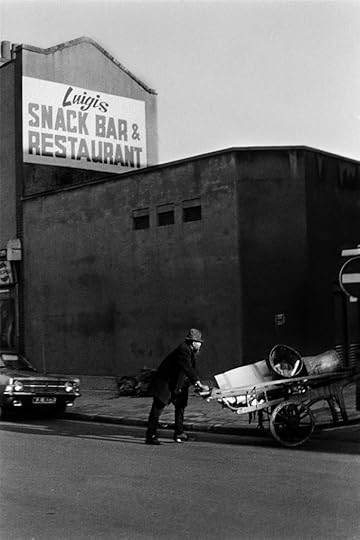 Brick Lane/Spitalfields area around 1974 © David Hoffman
Brick Lane/Spitalfields area around 1974 © David Hoffman
FIELDGATE STREET
“Why can’t I write something that would awake the dead? That pursuit is what burns most deeply.”
The streets haunt you, just as echoes of you haunt them. You walk past the bell foundry, an insinuation of holy smoke and sonorous alchemy, and into Fieldgate Street. Drunken nights walking home arms around shoulders, your talk bubbling out excitedly with butterfly ideas and suddenly-clear insights, all forgotten by the morning. You tell Sue about the book on relativity that you just read: words, unmediated and ill-understood tumble from your mouth and vanish like soap bubbles in the night air. She feels sorry for Nixon over yesterday’s resignation, she says, despite everything he’s done. He’s just a flawed human being like the rest of us. You come to the ghost-signed
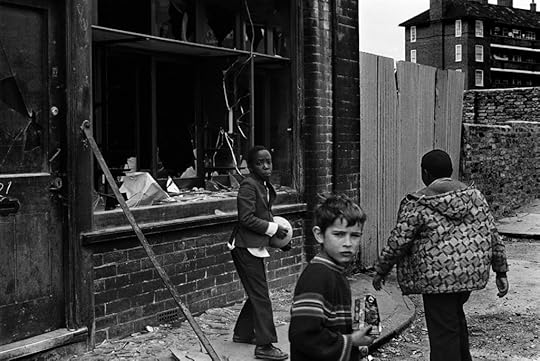 Kids playing in Black Lion Yard, Whitechapel 1973 © David Hoffman
Kids playing in Black Lion Yard, Whitechapel 1973 © David Hoffman
shop fronts at the turning into Settles Street.Store fronts that are never open, whatever time of day you pass, yet often they echo with the sound of voices within. On the next corner a fruit and vegetable distributor, its doors always shut fast, yet still the redolent smell of ripe onions. No longer able to resist, your eyes are drawn to the other side of the road, a monolith of red brick, the fingers of its Gothic corner towers scratching at the sulphurous sky, a low canopy of purple and grey. Rowton House, Jack London’s ‘monster doss house’, stares back at you, daring you to blink. Men queue to be allowed in: a still, silent line, an air of resignation hanging over them like the aroma of an unbidden fart. Meanwhile others, occasional and individual, burst out through the doss house doors, desperate to shake off its fetid air. Here and in the surrounding streets émigré Bolsheviks still debate with Mensheviks and, smiling, secretly plot their
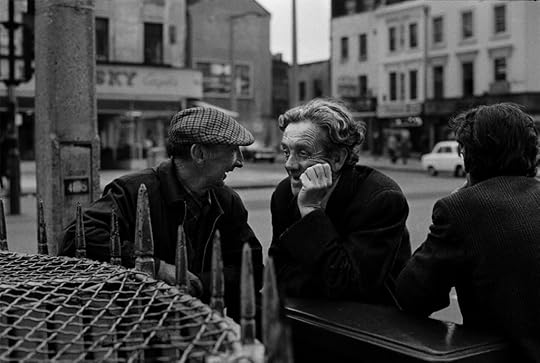 Street drinkers, Commercial Street, Aldgate around 1974 © David Hoffman
Street drinkers, Commercial Street, Aldgate around 1974 © David Hoffman
moment of vengeance each upon the other. Silent yet wakeful, Joseph Stalin lies in his bunk listening to the snores of Litvinov in the next cubicle. While before you on the street, his head bowed, the boots of a passing dosser beat a loose-soled tattoo against the greasy paving slabs. In your remembering eye the concrete is still slick with stir-fry oil. Was it last night, last year or some other decade? It could be any of those, but it was just here that Edinburgh Dave, he of the drooping moustache and swallowed consonants, dropped his Chinese meal as he raised an arm to greet you. Paper carrier-bag wet with grease lets go of life and the tinfoil tubs within hit the pavement with an explosion of rice and noodles. I prefer the soft ones, don’t you? Next door to the doss house is the Queen’s Head, one of those pubs bigger on the inside that the outside, and so convenient I hear you say. Katy, is that what she was called? She runs a tight ship, the dossers are allowed in when they have money in their pockets. Piss away your last penny but don’t you dare start your singing, or George will have you outside on your arse before the end of the first verse of Kevin Barry. That young man at the next table, the one with the older woman, he’s just a boy really. In his sleeveless t-shirt, he reeks of gin and testosterone. Turns out he was one who broke into your flat in Fieldgate Mansions that first evening while you were out drinking with Charlie. Leave the windows open to let in some air, he said. Second-floor flat, edging along the ledge from the landing, the pavement waiting below and it can almost taste the blood. Fuck all worth stealing anyway, but you
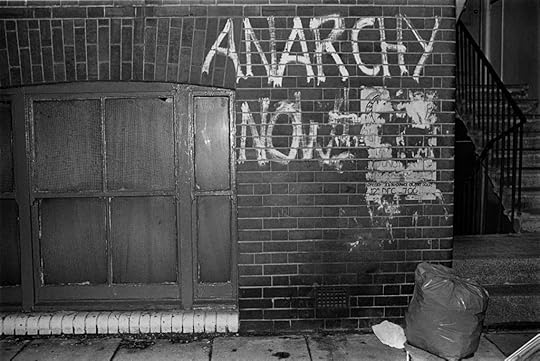 Fieldgate Mansions, a 19th century tenement block due to be demolished in 1972 but preserved by squatters occupying it © David Hoffman
Fieldgate Mansions, a 19th century tenement block due to be demolished in 1972 but preserved by squatters occupying it © David Hoffman
never make that mistake again. On the lintel above the front window of the basement flat, the one below yours, is another ghost sign: N.U.W.M. An offshoot of the Communist Party, set up in the 1920s by Wal Hannington to organise against unemployment and the means test. The campaign achieved its aims in 1939, but it took the exigencies of a world war for it to do so. Take care what you wish for. Fieldgate Mansions, three blocks of four-storey flats from the Edwardian-era, one block running the length of one side of Myrdle Street and the other two on Romford Street, with a midden yard in between the two. The blocks are in a poor state and are initially ear-marked by the council for demolition. Some flats are squatted and others are snapped up on a short-term lease by City Poly students’ union to provide cheap accommodation for students. You share a flat with Charlie, a room each, a kitchen and a toilet. No bathroom and, for the first few weeks, no cooker. You eat breakfast at Mick’s Café on Fieldgate Street, drink beer at lunchtime, more beer in the evening and then a late-night curry. Some evenings you drink wine and learn to play bridge with Len and Claire from upstairs before Len goes off to his night shift at the BBC, speeding up west on his motorbike. You lose touch with Charlie and
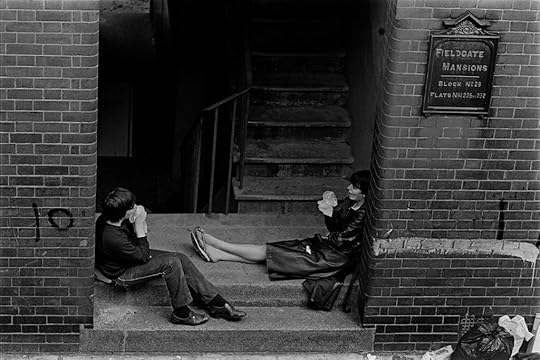 Glue sniffers on the stairs of Fieldgate mansions, Romford Street, Whitechapel 1978 © David Hoffman
Glue sniffers on the stairs of Fieldgate mansions, Romford Street, Whitechapel 1978 © David Hoffman
he goes on to become Gordon Brown’s press secretary. Fieldgate Mansions are not demolished but are tarted-up and taken over by a housing association.Social housing for the post-Thatcher generation with rents to match the level of aspiration. Rob Puttick’s flat is on the first floor, the ‘Fuck Off, Whatever You Want, You Can’t Have It’ sign on his door is only half in jest. Rob lives rent free in return for doing maintenance jobs for the student tenants, or at least those who shout the loudest. Astrid doesn’t shout, she asks him shyly, reluctantly and Rob agrees. A young woman, far from home, on the run and facing a punitive sentence for her peripheral role in the Rote Armee Fraktion. They marry and go their separate ways. He fixes fuse boxes and toilet cisterns for dope-mellowed students and she, as Anna Puttick, teaches East London lads how to mend cars rather than steal them. Theirs is a love story, of sorts. Rob, so kind and gentle, and Astrid, sweet-natured but lost in the aftershock of her youthful impulses. In the Hollywood version they will end up falling in love for real; the audience will see it coming, but not so the players. In the Good Samaritan with Charlie, he graduating from lager to Stolichnaya and lime, you sticking with the beer. You speak to Ash, he sits alone drinking cider. A brilliant PhD student conducting research into some unfathomable branch of physics, he has the
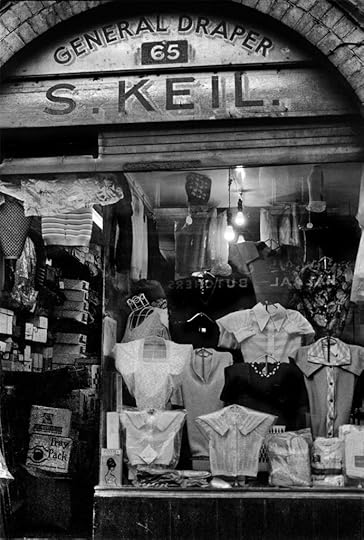 One of the last remaining shops in Hessel St, Whitechapel. Around 1972 © David Hoffman
One of the last remaining shops in Hessel St, Whitechapel. Around 1972 © David Hoffman
unsettling air of someone living permanently on the edge. But the anger within is implosive rather than explosive: only Ash is menaced by the shadow of Ash.It’s a short stretch from the hospital over the road for the junior doctors to slide into the Good Sammy and wash away the daily taste of death and decay. You see a young doctor being urged, implored, coaxed by his colleagues. After a show of reluctance he agrees and the yard of ale is ordered: two and a half pints of foaming bitterness. The voices of encouragement are loud, they all know how this nightly ritual will end. Only the victim, the compliant victim, changes each evening. Joseph Merrick comes willingly; Dr Treves cannot offer him a cure for his condition at the London Hospital, but he can offer him sanctuary, a safe place to live out his remaining days. Even the joshing students fall silent when they stand before his skeleton, the distorted frame that determined the course of his life. The skeleton stares back. Merrick’s hollow eyes suck in the room’s dim light and urgently, insistently he asserts his essential humanity. For this is not the plastic facsimile in the public museum, but it is Merrick’s real bony essence, locked away in a room behind the anatomy lab. Gently the young man puts the glass to his lips, a long shaft with a bulbous end, he tilts it violently and throws back his head. He swallows some, spills more and, without a word, stumbles straight outside to vomit over his shoes. When Sue wishes to pass unnoticed, to wander the streets like
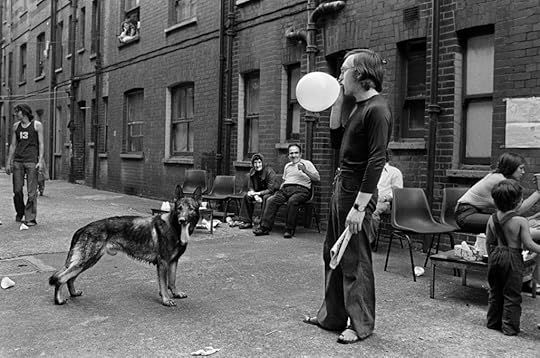 The Fieldgate Festival 1976 © David Hoffman
The Fieldgate Festival 1976 © David Hoffman
a fleeting shadow, she stuffs her flowing red locks into a faded green bush-hat. This summer you and she have become so close. But you hold back. Her boyfriend, Geoff, is supposed to be your mate and, despite him being marooned up in Sheffield until September, you insist to yourself that he will resume both roles when he returns. Only afterwards do you realise that Sue was in love with you too. She often stops to speak to lone dossers, though you sense she makes a point of doing so when you are together. A kind of test. In one way or another we all play to our audience, do we not? In his fifties perhaps, he is sheltering in the goods bay just along from the Good Sammy. He is from Scotland he tells you and all he possesses, you already know, is the coat on his back and the bottle of cider cradled to his breast. He wants to share his bottle with you. Sue drinks first, just a small sip without breaking eye contact with her host, and then she passes it to you. You give the neck of the bottle a discreet wipe with your thumb as you tilt it, put it to you lips and swig. He expresses appreciation, says most everyday people would wipe the bottle before drinking it after him but he noticed, he says, that you two didn’t, and you feel guilty. Walking back to her flat you are greeted by Duncan. He kisses Sue’s
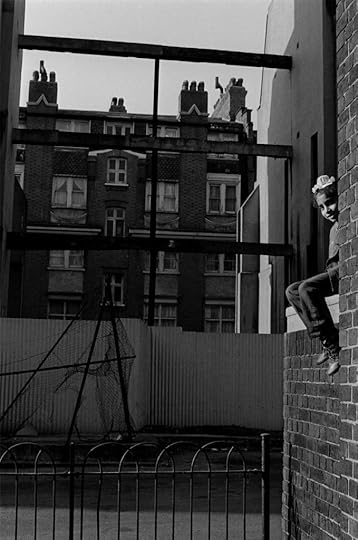 Child playing in tenement block courtyard, Whitechapel or Wapping, around 1972 © David Hoffman
Child playing in tenement block courtyard, Whitechapel or Wapping, around 1972 © David Hoffman
hand and bows a benediction to you both. Duncan is resourceful, a veteran of the evictions of the early seventies. He understands the power of the spectacle, a power he knows you can use against the forces that created it. When the first squatters were evicted and faced the prospect of sleeping on the streets that was precisely what they did, making sure the press and TV were there to record it. There were no more evictions. For Duncan it’s not just about squatting, it’s about enabling other people to squat: getting them into the property, dealing with the law, getting the services connected. He’s seen it all before; done it before. Everyone knows Duncan, he is the heartbeat of Fieldgate Mansions. You say your goodnights to him, standing on the pavement outside the Bangladeshi café which sits between the Queen’s Head and the butcher’s shop. Here, with Saif, you sit at a formica table and try your first samosa and jalebi. It is Saif who shows you to eat curry rolling it up into a rice ball with one hand. He teaches you how to say ‘Hello brother’ in Bangla. He regularly goes off to see his friend in West London to ‘buy money’. Saif who deserted the Pakistani army in the west and travelled across India, helped by the Naxalites, to join the Bengali rebels in the east. Saif for whom the height of praise for anyone or anything is to say that it is: ‘good enough’. Night descends. Purple and grey turns to black, the air turns chill. A metallic taste in your mouth and your eyes liquid with tears. You don’t even know her name, or if you did you’ve forgotten it, but she is a familiar figure in Fieldgate Street, selling her body to middle-aged men at cut-price rates to buy the next hit of smack. She is about the same age as you and
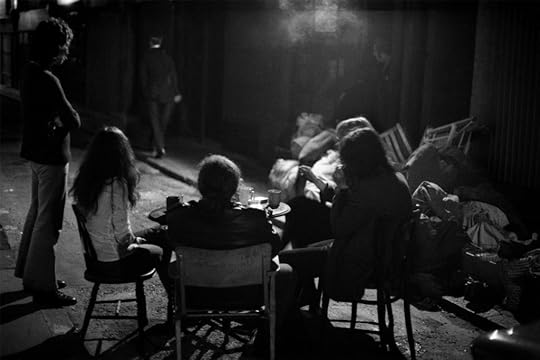 Squatters living in an old jeweller’s shop in Black Lion Yard, Whitechapel relax outside on a hot summer night © David Hoffman
Squatters living in an old jeweller’s shop in Black Lion Yard, Whitechapel relax outside on a hot summer night © David Hoffman
your friends, certainly no more than twenty, a short girl with curly brown hair. One night in Myrdle Street, as you walk home late with Claudia, you see her running up the street in tears. She is naked from the waist down and tells you she has been raped: ‘a boy raped me’. The two of you comfort her and a guy you recognise comes up and puts his coat around her. An act of simple kindness swallowed up in the turmoil that ensues. A crowd gathers and someone calls the police. They arrive, take charge and, reluctantly, people drift away. The next you hear, months later, the girl with curly hair has been murdered and a man arrested. And just to the south, in Dutfield’s Yard on 30th September 1888, Elizabeth Stride is butchered by the Ripper. Years afterwards you search the records and can find no trace of the Fieldgate murder and the girl for whom this street was once home. Her name is forgotten, yet her face haunts your memories. Walking south towards the river feels like entering another realm, a place where the Kaddish is still recited and battles still fought on Cable Street. You buy a cheap but reassuringly heavy Zenit camera from the back pages of the Morning Star: a promise of ‘quality Soviet technology’. You want to record docklands before it’s all gone. You have a sense of what is about to happen to the docks and a vision of an exhibition of your work a and glossy volume of monochromatic nostalgia. You see some of these locations years afterwards rolling by as gritty car chase backdrops in episodes of The Sweeney. John Thaw, our favourite cockney copper, born in Manchester and educated at RADA. On your second outing with your camera you wander nameless dockland streets capturing images of disused warehouses and cobbled quaysides. But you become aware of a rising uneasiness within yourself; indefinable but insistent. Soon you cut short your
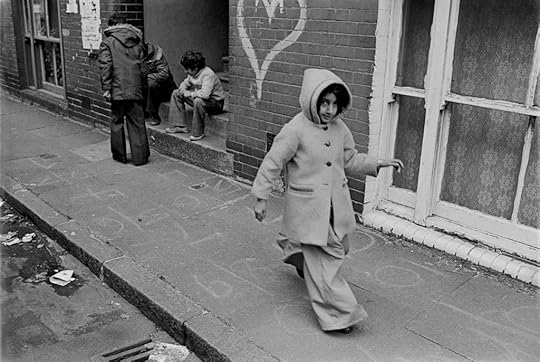 Bengali children in the Romford Street part of Fieldgate Mansions 1978 © David Hoffman
Bengali children in the Romford Street part of Fieldgate Mansions 1978 © David Hoffman
exploration and hurry away back to more familiar streets. You shelve the docklands project to spend more time studying for your end of year exams. Remembering only now that you never did get round to having those pictures developed. But the streets remember. Cold shadows, a creeping dread, and a brush with something you fight to lock away and keep from entering your dreams. On foggy nights, lying in bed in the room painted dark purple, you hear the ship’s horns from the Pool of London. Later, much later, you see footage of Iain Sinclair standing on Fieldgate Street in 2010 being interviewed about the refurbishment of Rowton House: Victorian poverty commodified for twenty-first century living. In the background, just within shot, a shadow of your younger self passes by. Sinclair’s left eyelid twitches in momentary awareness of a stray echo. A flickering light, a feathery brush against the skin, the hint of an evocative smell. It drifts through the streets, and you try to ignore the cry of anguish that resonates somewhere out there in the night.
ABOUT THE AUTHOR
Bobby Seal lives in Wales and has written for London Fictions, gorse, Stepz, minor literature(s) and several other sites. He blogs at www.psychogeographicreview.com where he delights in writing wrongs.
ABOUT THE PHOTOGRAPHER
Motivated by documenting what’s become increasingly overt state constraint on our lives, David Hoffman has spent some 40 years documenting a range of social issues from policing and racial and social conflict to homelessness drugs, poverty and exclusion. Protest, and the violence that sometimes accompanies it, is the theme that stitches his work together. Visit his website here.
June 6, 2018
Wyrd & Riotous Calendars to Corrupt Your Poor Mind
WORDS: Gareth E Rees
LOCATION: The Year
This month I’ve come into possession of two strange, unconventional calendars that turn the year inside out and upside down.
First up…
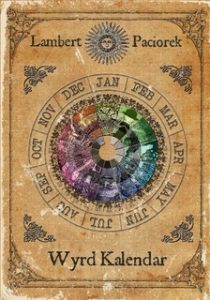 Wyrd Kalendar
Wyrd Kalendar
Wyrd Kalendar is written by Chris Lambert, the man behind Tales from the Black Meadow, which featured in a very early Unofficial Britain Post here. Together with the talented illustrator, Andy Paciorek, he has created a phantasmagorical guide to the twelve months of the year.
Wyrd is the watchword here. This is not the reality you recognise, but the truth you feel beneath the surface. Each month comes with its own short story or poem, characterised by murderous, bloody and sinister themes. Some are starkly modern, others feel like folk tales from yesteryear.
The jaunty song-poem that comes with May, for instance, describes the arrival of Auntie May at the house. After a little singing she becomes a maypole for the benefit of the dancing children and then winds up beaten to a pulp and her blood added to tea.
So it goes.
A similar feast of cannibalistic horror will also greet you in October on Feast Day, while June is all about wasps, but not in any way you could possibly predict.
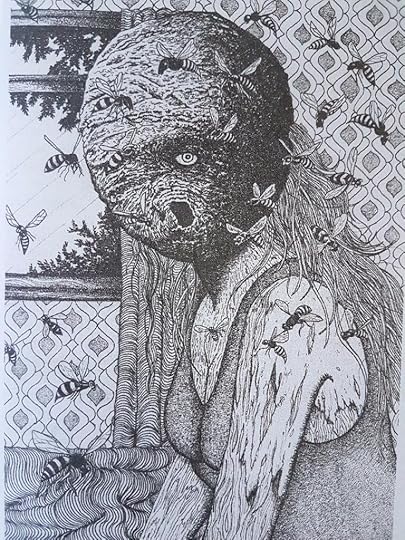 Fans of all things folkloric might recognise Chris and Andy as major players in the Folk Horror Revival scene, of which this book forms another essential part. Add it to your collection – order the book from here.
Fans of all things folkloric might recognise Chris and Andy as major players in the Folk Horror Revival scene, of which this book forms another essential part. Add it to your collection – order the book from here.
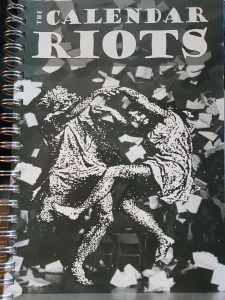 Calendar Riots
Calendar Riots
The second calendar was given to me by Lee, head honcho of the excellent Printed Matter bookshop in Hastings – check them out here.
Some text on the cover sums up the purpose of the book: “a work entirely calculated to excite unbridled license in grown persons and promote immorality in the young ones of both sexes, decorated with numerous copper plates, curiously and elegantly engraved.”
The idea is to turn every day of the year into a form of “shirker’s holiday” in which there will be some reason to take time off work to celebrate.
Throughout the book, each day comes with at least one or two historical events you might consider reasons for cancelling everything and raising hell.
For instance the 7th of June: “First ‘human beatbox’ makes mouth music at the Egyptian Hall, Piccadilly [1830]”.
The 31st of July marks the date that Daniel Defoe was forced to stand in the pillory for writing The Shortest Way with Dissenters, and a sympathetic crowd pelted him with flowers instead of mud and rotten vegetables.
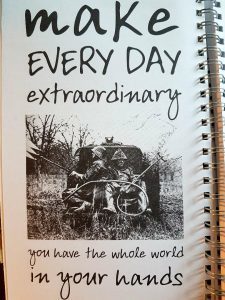 Or the 2nd of October is “The Nottingham Goose Fair” which dated back to Anglo Saxon times and was cancelled by Calendar Reform in 1752. The day celebrated “an angler who hooked a pike from the River Trent only to find the fish, line, rod and himself carried off by a wild flying goose and dropped uninjured in the Market Square.”
Or the 2nd of October is “The Nottingham Goose Fair” which dated back to Anglo Saxon times and was cancelled by Calendar Reform in 1752. The day celebrated “an angler who hooked a pike from the River Trent only to find the fish, line, rod and himself carried off by a wild flying goose and dropped uninjured in the Market Square.”
At heart, this DIY punk troublemaker of a handbook is an act of resistance against the way capitalism has stolen much of our time, eroding many of the folkloric celebrations that used to keep us merry throughout the year.
To get hold of a copy… well… that’s going to take a trip to Printed Matter in Hastings where it will be yours for free.
 ABOUT THE AUTHOR
ABOUT THE AUTHOR
Gareth E. Rees is the author of The Stone Tide, out now on Influx Press
A brave, inventive and profoundly moving book, new English landscape writing at its most expansive and necessary. Gareth E Rees is a post-punk Sebald.
– Ashley Stokes, editor of Unthology
Puts the ‘psycho’ into psychogeography.
– Andrew Weatherall
This collision of the fabulous with everyday life of television, DIY, pubs and hospitals, encapsulates Hastings, whose layers of national history and local legend are uncovered by the narrator, whilst at the same time excavating his own past.
– The Fortean Times, May 2018.
November 18, 2013
Soundchronicities: Exploring The Hallucinatory Sounds of London’s Wilderness
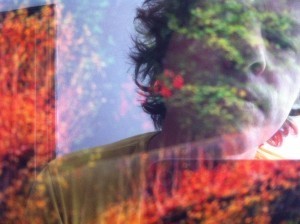 At long last, Marshland: Dreams & Nightmares on the Edge of London is out now on Influx Press, (order it here)
At long last, Marshland: Dreams & Nightmares on the Edge of London is out now on Influx Press, (order it here)
The book is a time-travel journey through the Lea Marshes, weaving together supernatual stories, local legends, weird histories and tales of my own encounters and mishaps.
In the final part of the book I write about how music can be a tool of engagement with the landscape, if you turn the volume down so that the sounds of the environment are audible and choose evocative music that has space between the beats and melodies. Ambient, music concrete, minimal techno, experimental electronics, library music, sound collage all work for me.
As I walk, the music blends with the sound of wind, hooting horns, dog barks and disembodied human voices, creating a unique audio mix, never to be repeated. At times it’s hard to tell those sounds that are in the music from those transmitted by the city. The distinction becomes meaningless. The music mutates the landscape and the landscape mutates the music.
I call these experiences soundchronicities. They create a space where mind, music and environment intersect. It’s a magical world, liberated from the rhythms of everyday reality, and utterly transient. It exists for a moment in time, somewhere in between you and the artist, mediated by the landscape.
I’ve created a mix of music which captures the essence of my walks on East London’s marshes – that blend of industrial and pastoral noise, the late night raves, the raucous birds, the unrelenting drone of the city and the eternal lapping of the dirty river.
November 3, 2013
Dead Bears, Ghost Factories & Blitz Secrets: The Hackney Marsh Tour Extravaganza
 In a moment – BIG news about the forthcoming marsh tour extravaganza….
In a moment – BIG news about the forthcoming marsh tour extravaganza….But first…
On Wednesday 2nd November there will be a live performance of A Dream Life of Hackney Marshes, a hallucinatory journey through the Lea Marshes, fusing spoken word, chamber music, avant rock and electronics. The event (billed as “The Gig of the Year” by an imaginary source) is to celebrate the launch of the album, a collaboration between me and Jetsam, out on Clay Pipe Music on Monday 11th November.
It’s all kicking off after 7pm at Ye Olde Rose & Crown, Hoe Street, Walthamstow. More details of the gig, and how to get tickets, are here: Gig Tickets. If you’re on Facebook, click here: Book of Face
Or join me for….
A Marsh Tour!
My book Marshland, illustrated by Ada Jusic, is available for pre-order here and will be published on the 14th September. To celebrate the launch, you’re invited to join us for a tour of the marshes on Saturday 16th November.
We’re meeting outside the Princess of Wales (by the Lee Navigation, Lea Bridge Road) at 12:45, for a prompt departure at 1pm.
The tour will take in many of the spots described in the book… the filter beds, the Old River Lea, Hackney Marsh, the site of the old toy factory and the Navigation… crossing the threshold between what is real and what is imagined. Come and hear about dead bears, giant fish, druggy Victorians, obscure micronations, phantoms and Blitz bombs.
The tour will take about two hours. At the end we’ll all go to the Clapton Hart by the Lea Bridge roundabout for a knees up, where you can ask me any questions you like about the marshes. You can ask me questions about other topics too, but don’t expect any well-informed, reasoned answers.
You’re welcome to bring booze, dogs, cats (!) or whatever you like. It’s going to be informal, possibly chaotic. Even if you know the marshes well, it might be interesting to get another perspective, albeit a warped one.
If you’re on Facebook, let us know you’re coming: Facebook Gubbins
The Hackney Citizen have written a piece about the event which you can read here: Spooky Goings on on Hackney Marsh



